What Can I Compost At Home?
Wondering what you can put in your compost bin at home? Read through for more details about what can and cannot go into a compost bin at home, “greens” versus “browns” in your compost pile, and even a few notes to clear up some compost ingredient confusions.
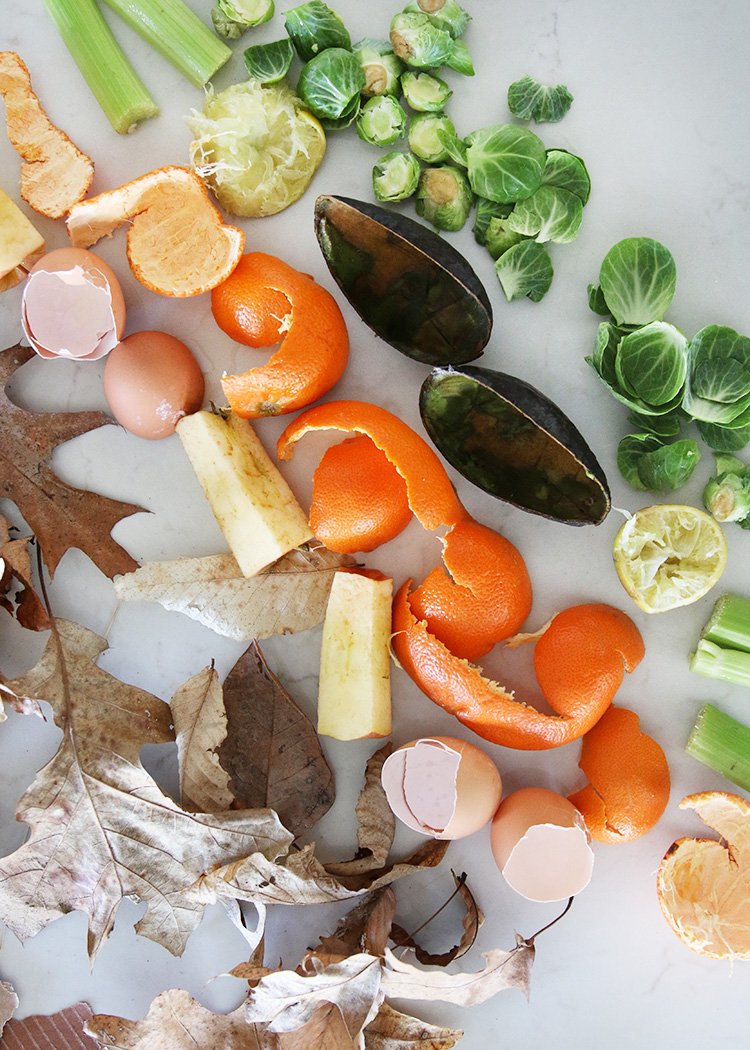
You understand the environmental importance of composting and have decided to dive in and try it out. You have your bin, or tumbler, or corner of the yard for a pile of trash that will turn into Earth’s treasure.
But now you’re wondering what the heck to put in this bin or pile or container for composting. Let’s discuss and hash out all the details about what materials belong in a compost pile and which materials ought to find a home somewhere else.
Organic vs Inorganic Matter In Compost Bins
First things first, composting is the process of decomposition of organic materials from their current state back into the smaller component nutrients and elements that make them up. Only organic matter, or things that were once alive, can be composted. Food scraps, yard waste (like grass clippings and dried leaves), natural fibers (like cotton and wool), and paper products (such as clean paper, toilet paper tubes, and cardboard) are perfect additions to a compost bin.
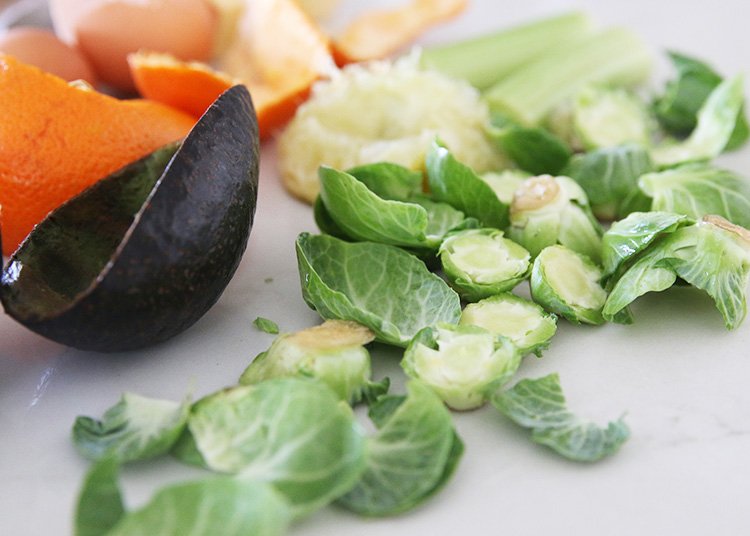
Greens Versus Browns
Compost piles need four elements to successfully break down: oxygen, water, carbon, and nitrogen. Water comes from rain or manual watering. Oxygen is in the air. Carbon and nitrogen are the “brown” and “green” elements, respectively, often mentioned in books and resources about composting.
“Greens” are items like food scraps, yard waste, manure, coffee grounds and other items that become sources of nitrogen for the compost. Many of these items are green in color (hence the name) though this is not a rule by any means. “Greens” have high levels of nitrogen in them. Consequently, those items return nitrogen to the soil during decomposition.
“Browns” are items that add carbon to the decomposition process. Common examples include dried leaves, cardboard and paper (all byproducts of trees), and straw. These items are often, though not always, brown in color and called such accordingly. “Browns” have high levels of carbon (and lower levels of nitrogen) in them. When “browns” decompose, they break down and release some of the carbon components stored in them back into the soil.
A variety of resources discuss the “perfect ratio” of browns to greens. For now, know that there is not a perfect ratio to consider with respect to composting at home. Volume ratios are far from precise because they are highly dependent on the type of matter in the pile.
You’ll know when the ratio is off because the compost becomes too wet and smelly or too dry. If it’s too wet, it needs more carbon (or browns) to dry it out and work with the excess of nitrogen. If the pile is too dry, it needs more nitrogen (or greens) and possibly water as well. When the ratios are correct, the compost has a sweet, earthly smell and won’t stink at all.
That’s probably enough basic science to introduce why we think about compostable matter in two separate categories. We will dig deeper into ratios of greens vs browns and more science in later articles in the series.
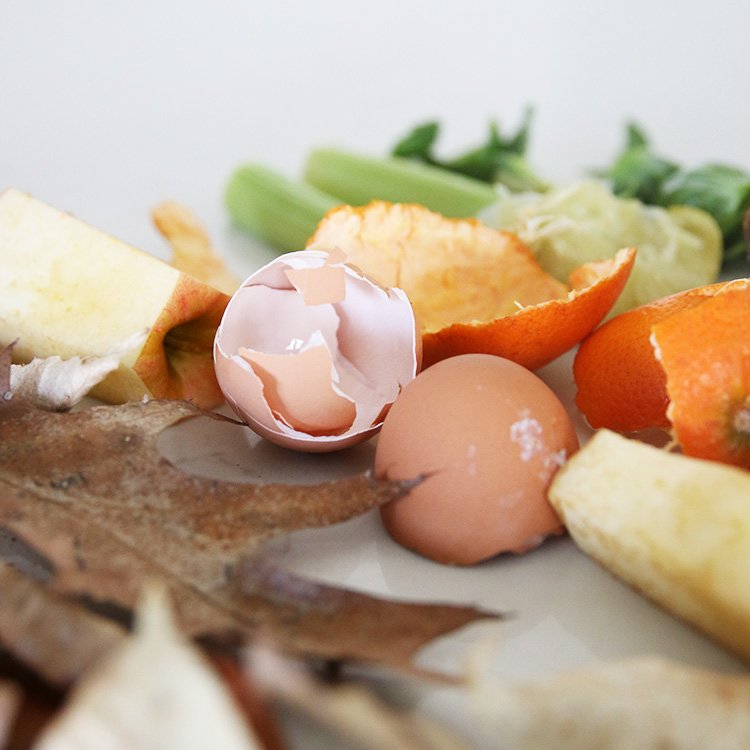
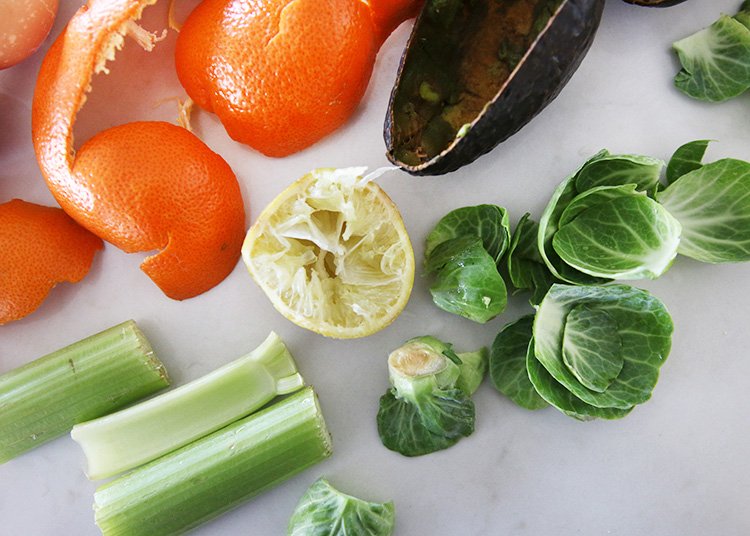
More About What You Can Compost At Home
Below I’ve included a quick chart of “greens” and “browns” that can be composted in a pile at home.
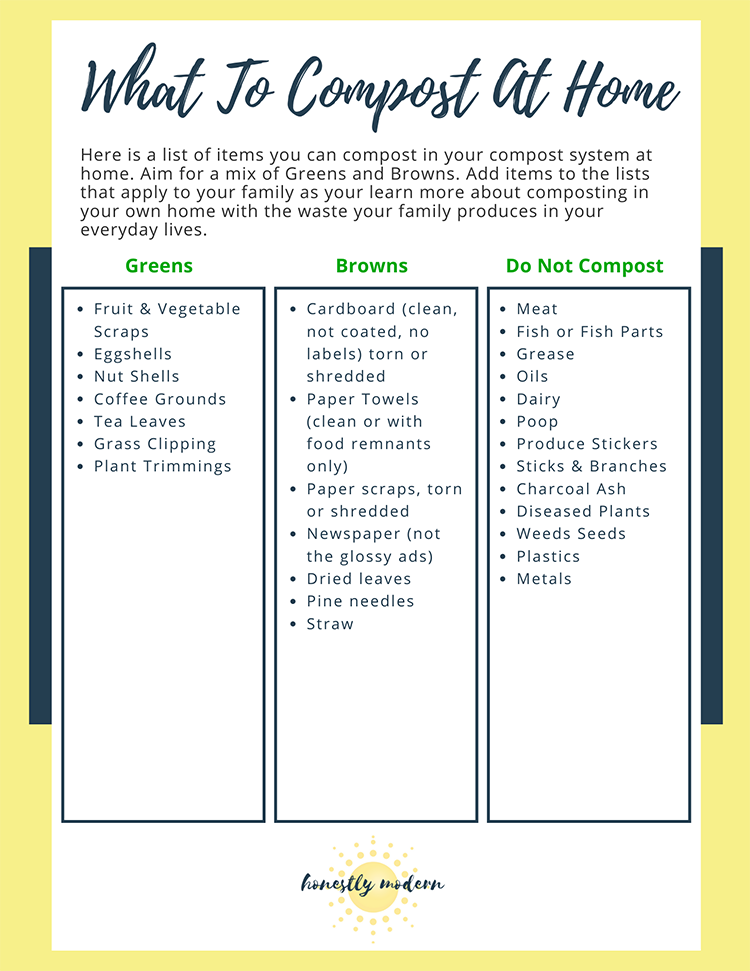
Keep reading for more details on specific types of materials that are on the list but have certain qualifications to keep in mind when you compost them. I’ve also included information about why certain materials should not go in your compost bin at home.
Paper and Cardboard
Paper and clean cardboard come from trees, which used to be alive, so they can be composted. They are a great source of carbon, a necessary element of a successful compost pile. However, not all paper and cardboard are created equal in the world of composting.
Shiny finishes on paper and cardboard, stickers, and labels are often made of plastic or other inorganic materials. If cardboard or paper has a shiny sheen or stickers on it, it cannot be composted (unless the materials are specifically made of organic materials and designed to be composted).
More and more companies are investing in sustainable packaging, but assume shiny paper and cardboard are not compostable unless you know for sure. Otherwise, you’ll just end up picking them out later or contaminating your compost pile.
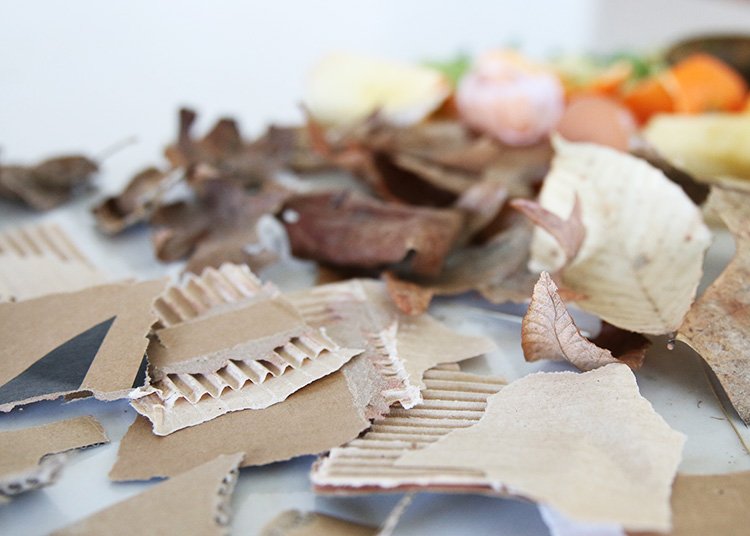
Corrugated cardboard is wonderful for compost piles. Corrugated cardboard is the thick cardboard used to make things like packaging boxes. If you tear corrugated cardboard in half, you will see that the inside has a zigzag piece of cardboard down the middle (like in the photo above). This structure makes the cardboard much stronger for shipping and storage purposes. In a compost bin, the air pockets between the zigzags are perfect little oxygen sources for all the macro- and microorganisms doing hard work in the compost pile.
When boxes or paper have labels or stickers on them, remove the labels or recycle the sections covered in shiny plastic. Then shred or tear up the rest of the clean paper or cardboard for the compost bin. Amazon boxes are great compost bin fodder. To prepare them for composting, you need to remove the labels, stickers, and packaging tape (that often contains little string-like material for strength).
Coffee Grounds and Filters
Coffee grounds are great for compost piles and provide high levels of nitrogen. Even though they are brown in color, they are “greens”. Because they provide high levels of nitrogen, they need quite a bit of carbon from cardboard, dried leaves, or other “browns” to offset the nitrogen levels.
Coffee filters can also be composted. I don’t drink a lot of coffee, but when we have guests, I take the whole coffee filter with coffee grounds in it and toss it into the compost pile. I don’t even take the time to tear it apart. Tearing it apart would help it compost faster, but speed isn’t a priority for me.
You can also pick up coffee grounds from Starbucks (and maybe your local coffee shop). They keep the coffee grounds in a bag separate from their regular trash and offer it to customers for free. Just ask at the register, and they will pass it to you right over the counter. I’ve done it a few times, even with my boys in tow. Be forewarned that your car will smell like coffee until you take them out of the car.
Tea Leaves and Bags
Tea leaves belong in a compost pile. Whether or not you can toss tea bags into a compost pile depends on how the bags are made. I do not drink tea and don’t know much about the products, so I suggest checking out this article that breaks down all the details about using tea bags in compost piles. In many cases, they can be composted, so it’s worth a look if you regularly drink tea.
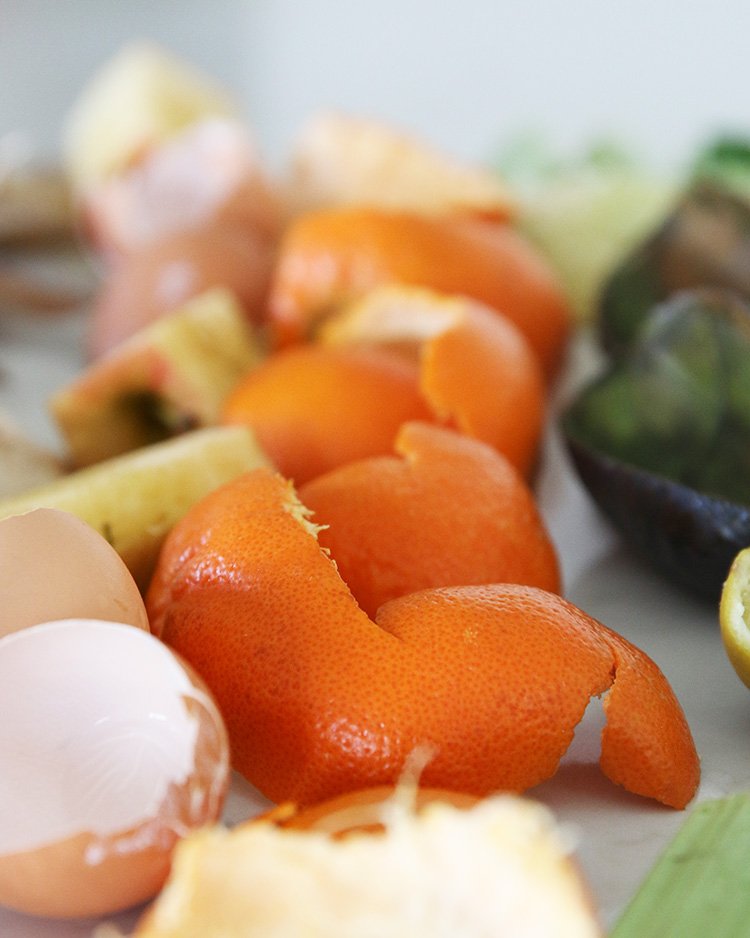
Citrus Peels
Despite some thoughts on the contrary, citrus peels (like those from oranges, lemons, and limes) will not hurt your compost pile. Feel free to add them to your compost pile, particularly if it’s just the peels from your regular consumption of citrus fruits at home.
In fact, citrus peels can even be good for your compost pile because many pests (like raccoons and other scavengers) don’t care for the smell of citrus peels, so citrus peels may deter these pests from sneaking into your future garden gold.
Worms don’t love citrus, so many vermicomposters choose not to add citrus peels to their worm bins. The citrus peels won’t hurt the worms, but you’re probably better off tossing those in an outdoor pile or using them in a DIY citrus vinegar solution if you don’t have an outdoor compost alternative.
Citrus peels take a while to break down, so cut them into smaller pieces if you’re concerned about composting speed. However, feel free to put your citrus food scraps to good use in a compost pile and know that they won’t hurt your dirt. They may even give it a nice, fresh aroma.
Do Not Put These In Your Compost At Home
Inorganic materials (things that never lived) like plastic do not belong in a compost bin. That is probably fairly obvious. But there are also certain food and food-related products that are best thrown in the trash and sometimes are overlooked.
Produce Stickers
These are annoying little buggers. Don’t forget to take the produce stickers off of things like banana peels, avocado skins, citrus peels, and watermelons rinds before tossing the food scraps into the compost bin. They are made of a variety of different materials and many won’t decompose, so find them a home in your trash bin.
Meat, Dairy, and Oils
Conventional advice discourages adding meat, dairy, and oils to your compost bin at home. These products were once alive, so they will decompose eventually. They won’t ruin your finished compost. However, they might attract more animals and pests to your compost bin, so many people don’t add these items to their compost bins at home.
I occasionally toss a paper towel with butter or oil remnants in the bin, but I don’t put meat scraps or dairy leftovers in the compost bin. These items can sometimes be included in compost pick up service bins where items are composted in a more industrial manner at higher temperatures. However, be sure to check the instructions for whatever collection company you use. Each company has its own guidelines around materials they accept for composting based on the methods they use to compost, their location, and other factors unique to their circumstances.
Large Sticks & Branches
From experience, I assure you these will take forever to compost and aren’t worth adding to your pile. I have removed far too many sticks and branches from our compost pile after my wishful thinking led me to hope they would decompose.
Sticks and branches were alive, so they will decompose eventually. However, they take much longer than the rest of the items in a home composting pile, and I’m pretty sure you’ll just end up pulling them out of the pile when you’re set to use the rest of the compost that has finished decomposing and is ready for your garden.
Weed Seeds
Some people add weeds to compost piles and others do not. I put weeds in my compost pile because … it’s easy. However, weeds and their seeds can live through decomposition and grow in your fresh soil if the pile does not get hot enough during decomposition to kill the seeds.
If you really don’t want weeds in your soil and aren’t sure if your compost pile will reach a temperature high enough to kill them, then don’t add weeds to your compost. If you don’t care, like me, feel free to add them to the pile but understand the risks. (I’m not so against weeds in general.)
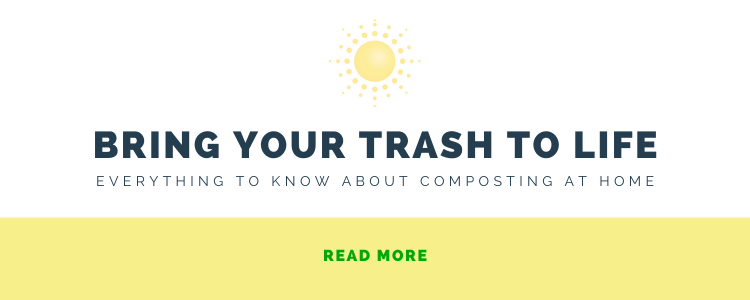
All About Balance
You will create the best humus, or finished compost, by finding the right balance (just like most things in life). Your compost pile needs browns and greens. It needs air and water. It needs a variety of food scraps, yard waste, carbon sources, and more. The macro- and microorganisms eating away at the matter in our compost bins want balanced diets just like humans.
Too many citrus peels or onions skins or cardboard boxes will leave you with a compost bin that’s not working effectively and efficiently. However, you and your family probably wouldn’t eat in such a way that you would overload your compost bin with far too much of one thing if you’re just using your compost bin for household food scraps and yard waste.
Composting at home is not an exact science at all. It’s quite easy and hard to mess up if you know a few basic guidelines and give it a bit of attention. Toss organic material into a bin, turn it occasionally, and watch it rot. If it smells funny or looks dry, add some “browns’ or “greens”, respectively, and watch it thrive.
Do you have any other questions about what you can and cannot put in your compost at home? Leave them in the comments, and I will do my best to answer them!




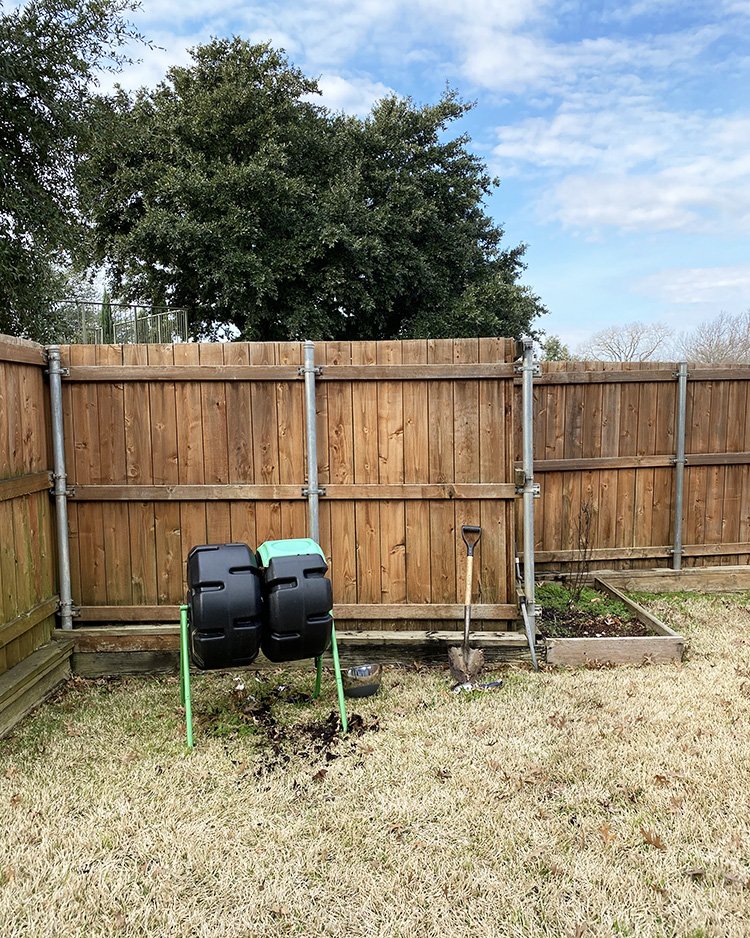
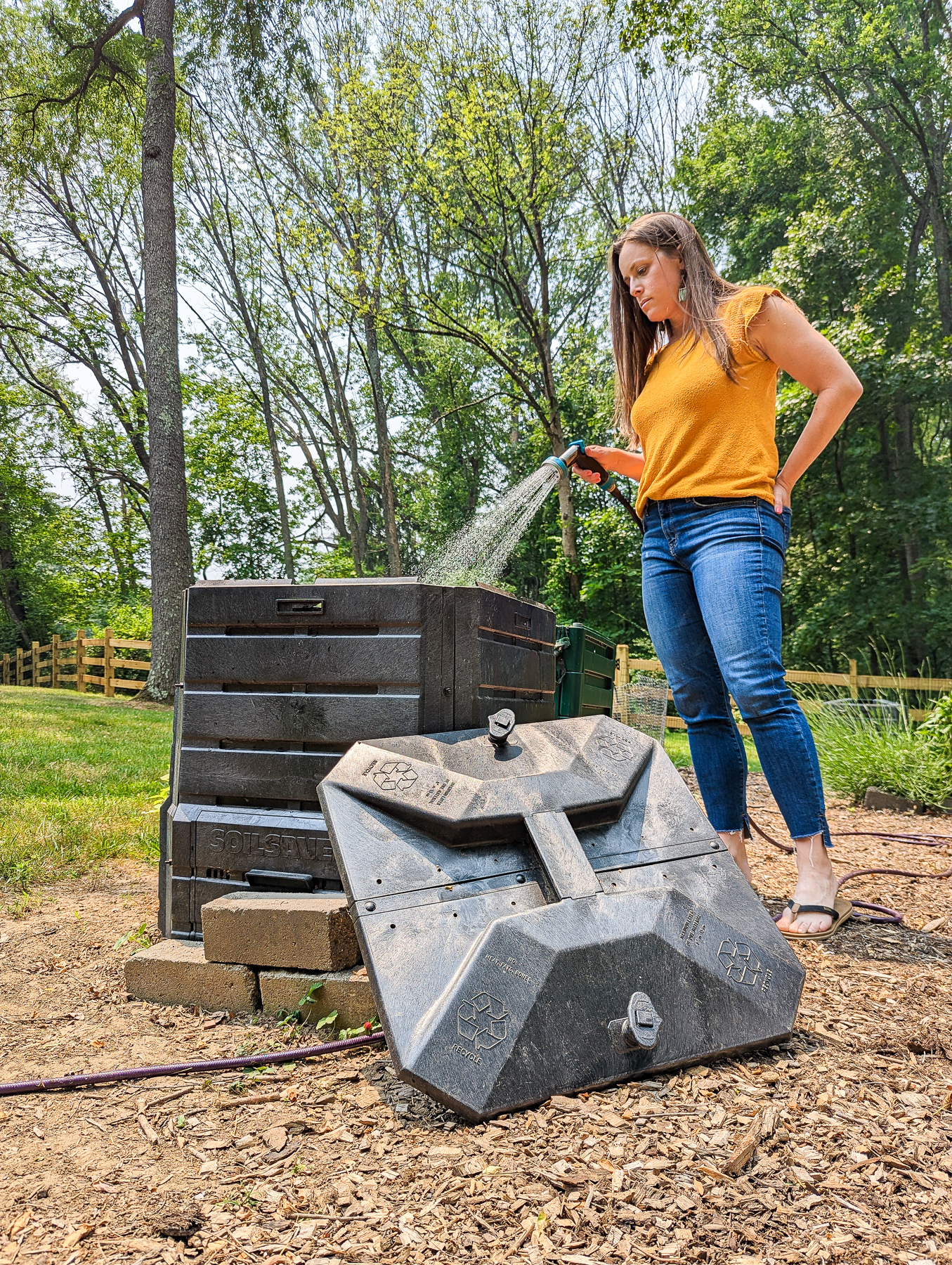

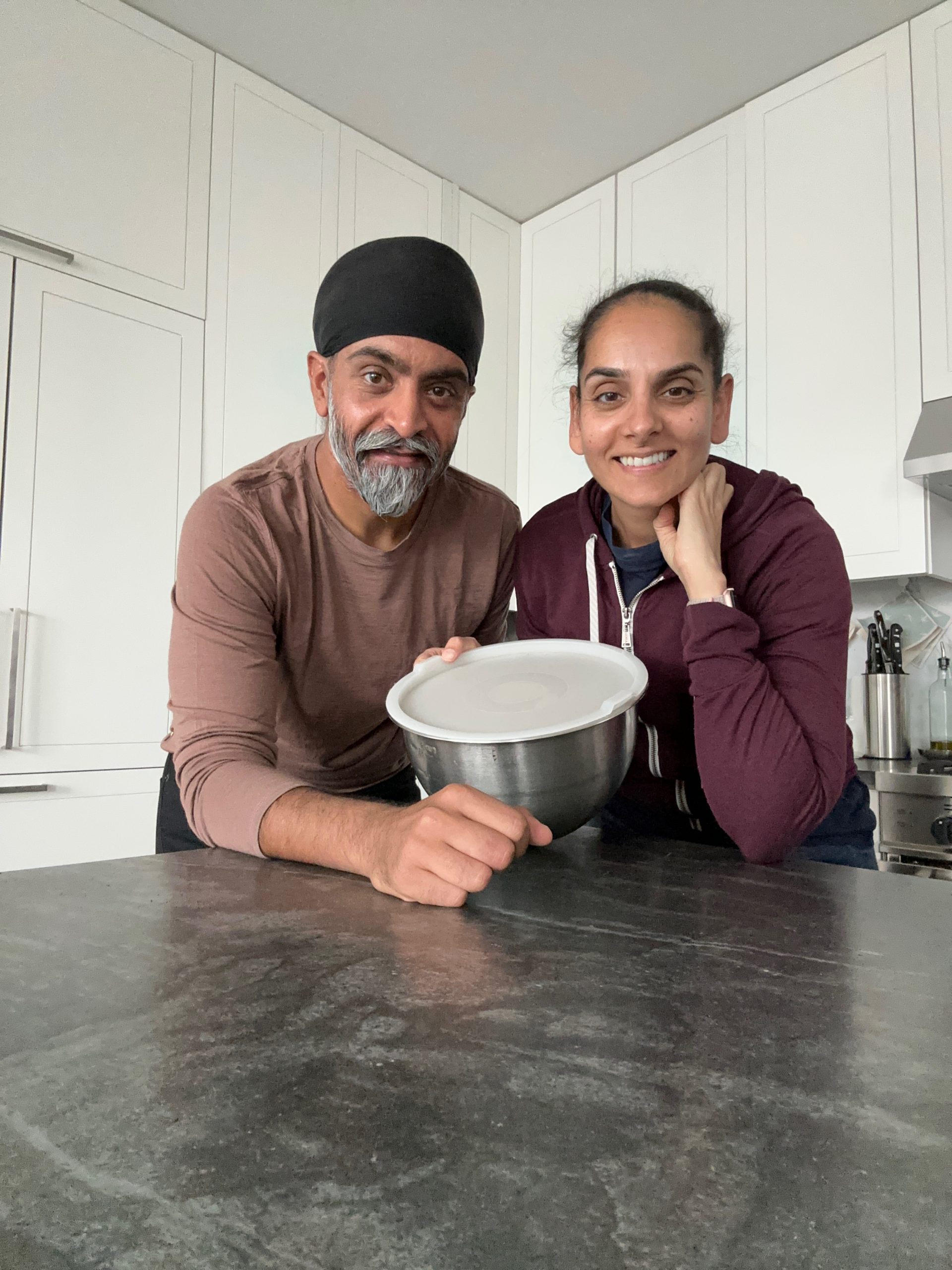
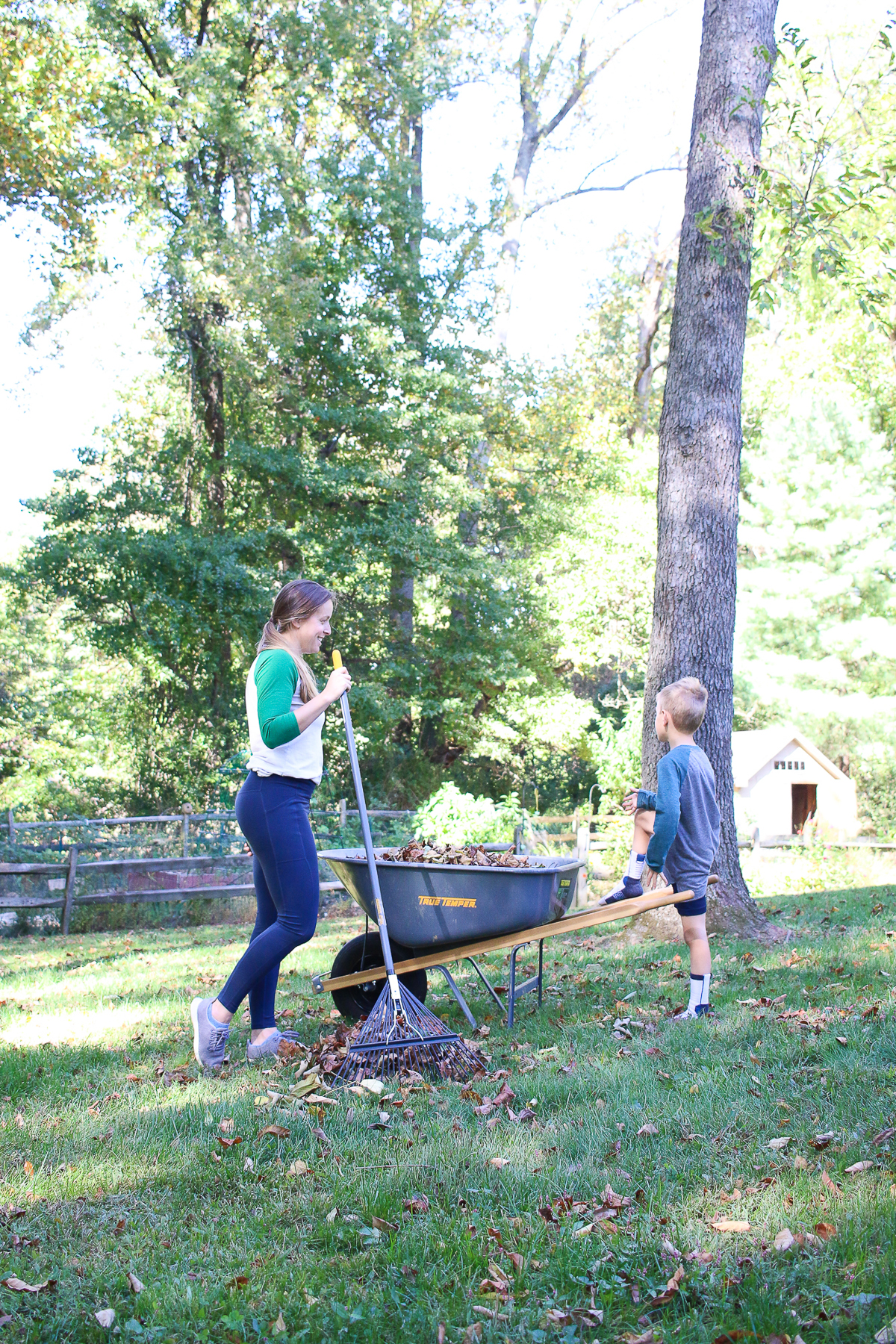
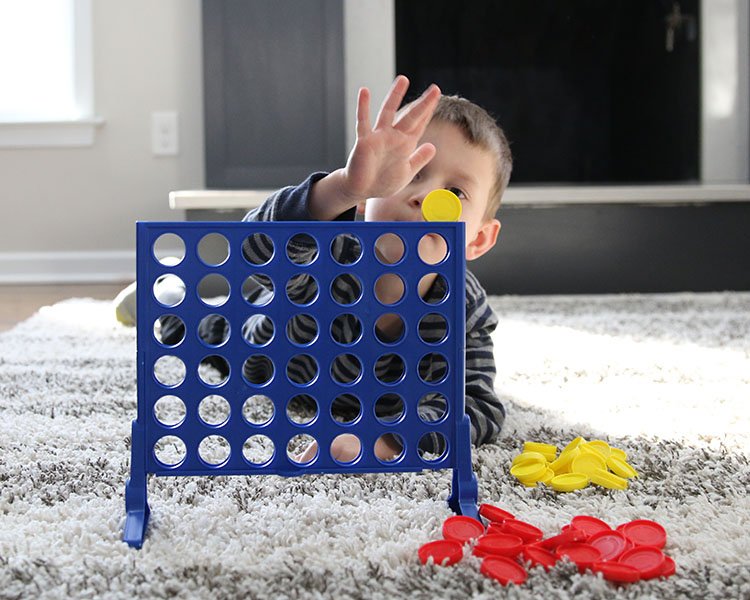

Egg shells I understand take years to decompose. Do you still suggest we can add egg shells to the compost bin.
Yep! Eggshells are a great addition to compost.